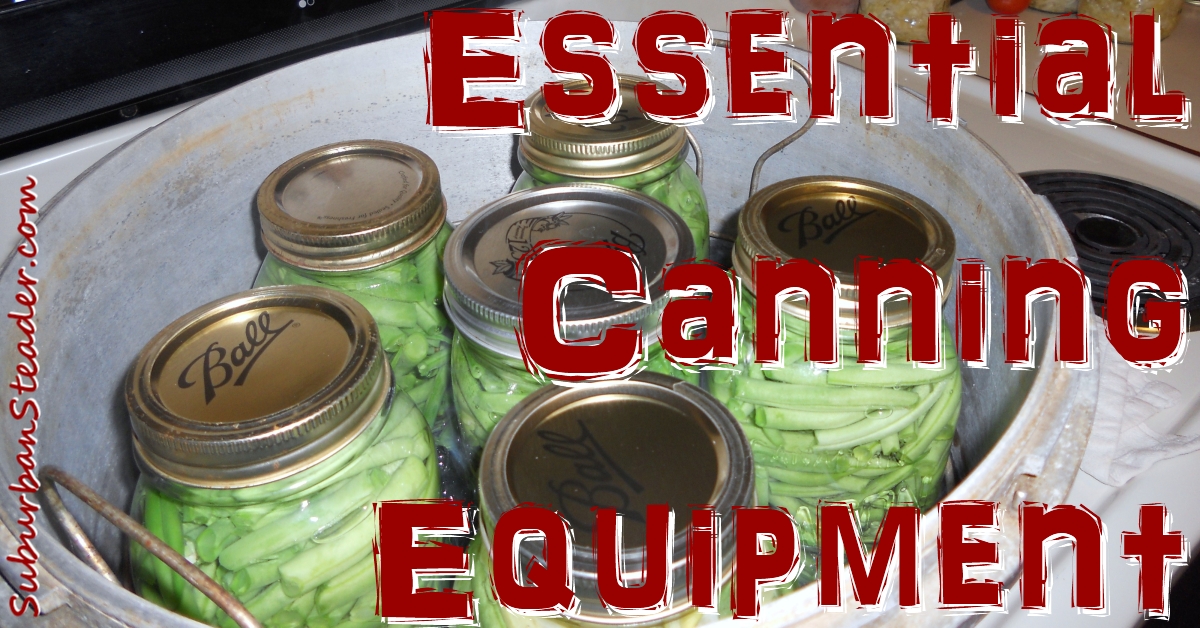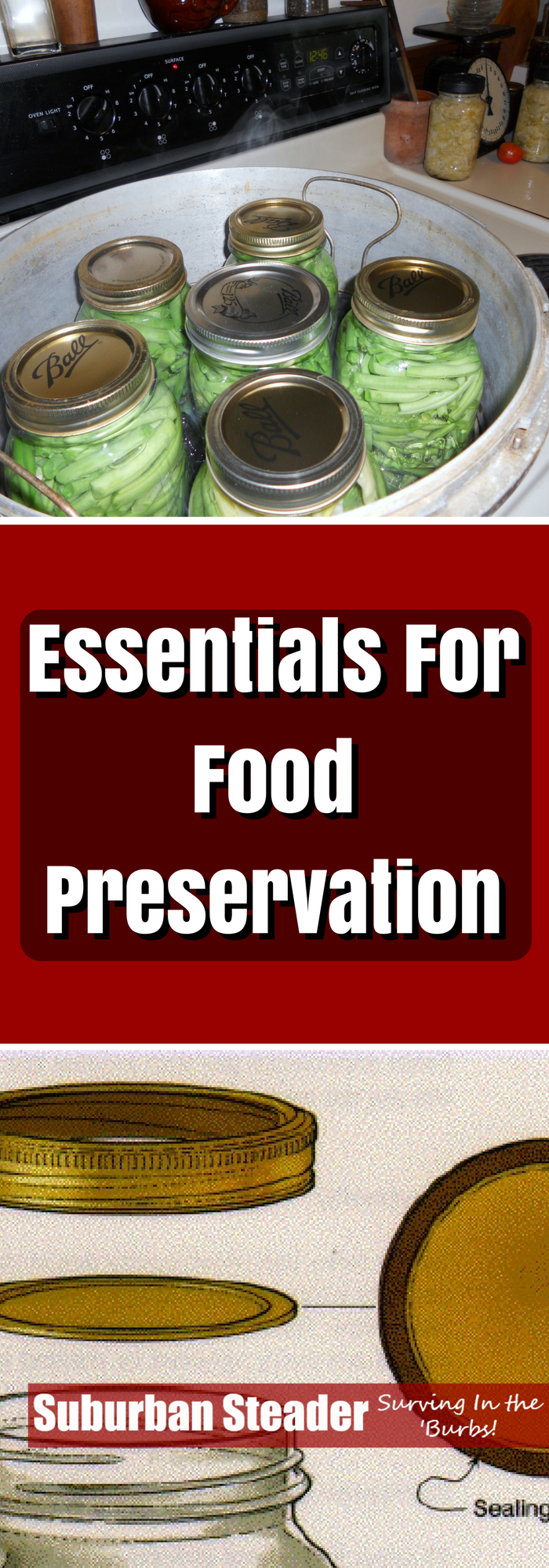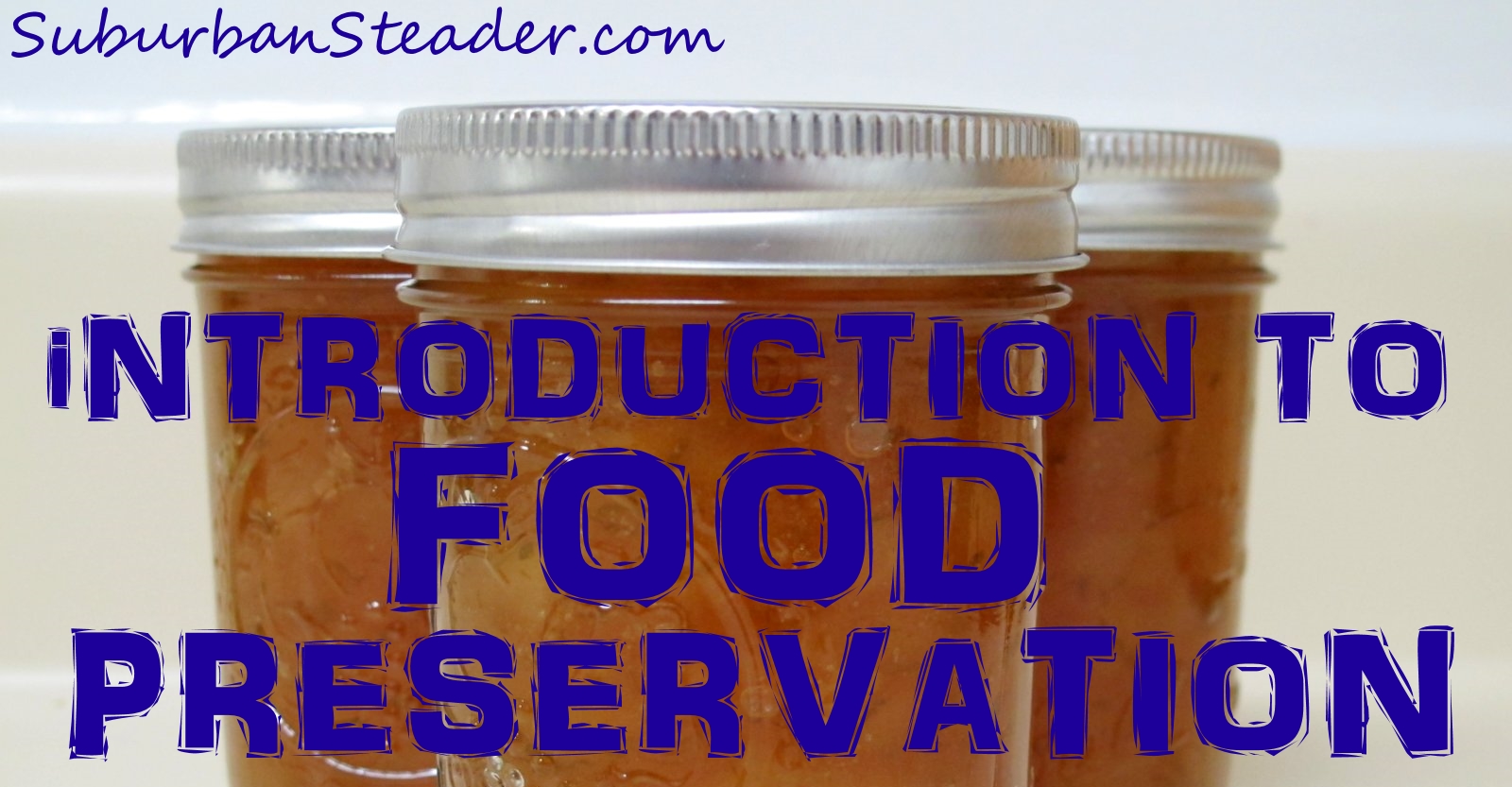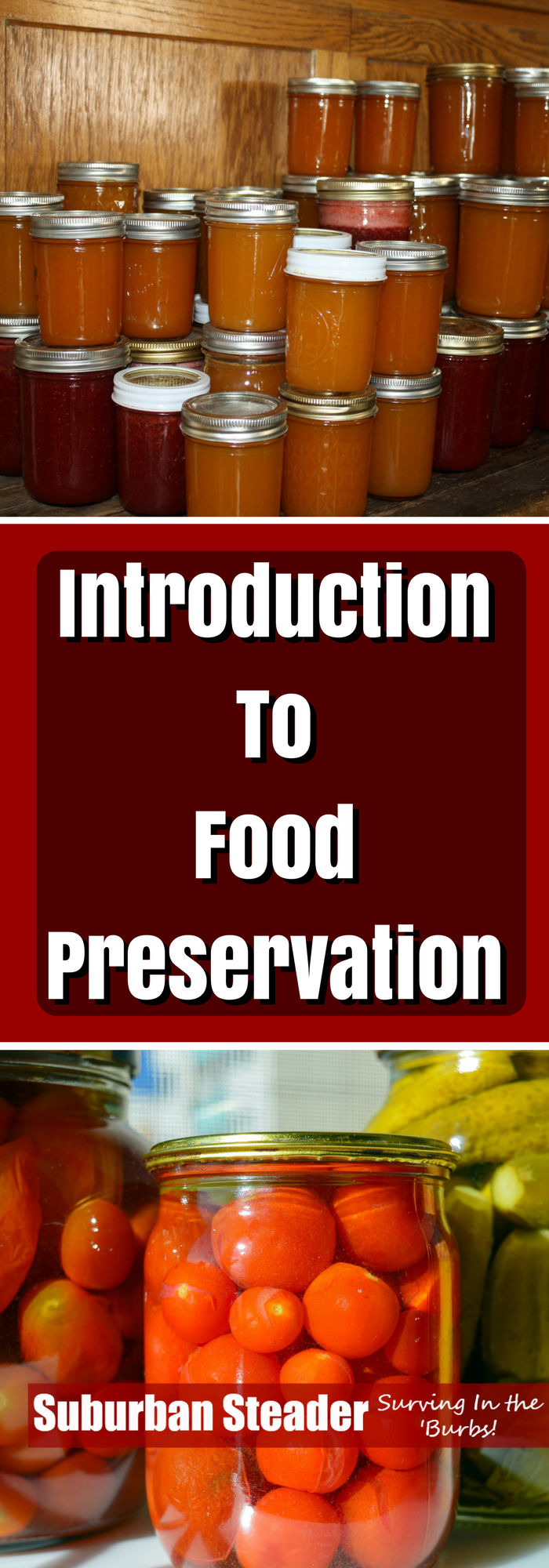Canning Equipment: Essentials For Food Preservation
I recently started a series on food preservation. The first post was a general overview of the reasons people preserve food and the general processes that are used. It was a fairly comprehensive post while also staying pretty high-level.
We’re going to get a little deeper into the rabbit hole in this article. If you’re like me, you love gear – and kind of gear. Equipment of any kind is my kryptonite when I’m getting into a new hobby or passion.
Today we’re going to feed that need for gear with an article all about essential canning equipment – what you need, why you need it, what it does and where you can buy it.
Go grab a cup of coffee, sit back and relax – it’s gonna get fun!
Canning Food Preservation Basics – A Refresher
The basics of canning involve placing the food you want to store in a can or jar and then raising the temperature to a point where microorganisms are destroyed and food-spoiling enzymes are rendered inactive.
The raised temperature also drives air from the container which causes the can or jar to vacuum seal as it cools.
The vacuum seal serves three purposes:
- It holds the lid on the jar
- It prevents the food from drying out
- It prevents contaminants from entering the jar
At this point, the food is considered “commercially sterile” because all disease causing organisms have been killed.
Some organisms do survive, however. And they can cause the food to spoil – but only if it is stored at temperatures in excess of 95oF.
The good news is that this spoilage is easy to recognize – gases or bad odors will be present – and it will not cause illness.
Essential Canning Equipment
Gear is what makes guys like me thrive. I love tools of all kind – from the kitchen to the garage. I collect, study and enjoy working with many kind of tools.
The tools described below are the essential canning equipment for any kitchen.
Ball Blue Book Guide To Preserving – First and foremost, get your hands on a good recipe book. The Ball Blue Book Guide To Preserving is considered the absolute best in the industry. The book is being published in its 125th anniversary edition. That fact alone should give you an idea of how much authority this book has in the industry. Be safe and get this book before you get anything else.
Canning Jars – Believe it or not, specific canning jars must be used to properly can. These jars must be able to withstand the low temperatures of freezing and the high temperatures involved in steam pressure processing. Not surprisingly, these jars will be labeled as canning and/or freezing jars. They commonly come in half-pint, pint, quart and half-gallon sizes with regular and wide-mouth varieties available. You should make sure you’re using the size specified in your tested directions. Sealing edges need to be free of cracks or chips.
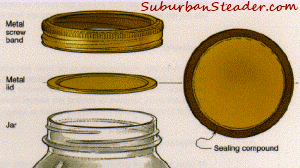 Two-Piece Closures – Home canners typically use a two-piece closure system which consists of a metal lid and a metal band. The metal lid has a rubber-like sealing compound that interfaces with the jar lid. The metal band is tightened to hold the metal lid in place. Lids are a “one and done” item meaning they are only used once. Bands can be used over and over again assuming they are washed and dried between uses.
Two-Piece Closures – Home canners typically use a two-piece closure system which consists of a metal lid and a metal band. The metal lid has a rubber-like sealing compound that interfaces with the jar lid. The metal band is tightened to hold the metal lid in place. Lids are a “one and done” item meaning they are only used once. Bands can be used over and over again assuming they are washed and dried between uses.
Jar Lifter – This tool is used to lift any size canning jar, for both placing in or removing from boiling water. Quality units are metal with rubber coating to make sure nothing slips. Steer clear of the plastic versions – they can crack or break much easier than their metal counterparts.
Jar Funnel – Used to fill the jars, this simple tool helps keep the jar rim clean. Keeping the jar rim clean is important because the quality of your seal is directly related to the cleanliness of the jar rim.
Lid Wand – Metal lids get quite hot when they are in hot water. This magnetic tool will lift the lids and keep burns at bay.
Headspace Gauge – As the name invokes, this tool allows you to measure the required headspace before you close the jars.
Bubble Freer – A plastic tool that allows you to remove trapped bubbles in the jar prior to starting the canning process. This tool and the headspace gauge are typically on in the same.
Boiling Water Canner – These canners, which are used to process acidic foods (tomatoes, pickles, jellied fruit products, etc) are fairly simple. The only requirements are that they must have lids and must be capable of holding a rack of canning jars with enough room to cover the jars with 1 to 2-inches of water.
Pressure Canner – As you remember from my Introduction To Food Preservation post, low acid foods are pressure canned. This canner must be deep enough so that the rack and jars don’t interfere with the lid locking mechanism. The lid can seal either through a rubber gasket or a metal-to-metal seal. It also must have a vent pipe and safety valve.
Dial Gauge Canner – These canners are designed to measure pressure in Pounds per Square I – PSI. A small vent port holds a counterweight or petcock which opens and closes. These don’t jiggle or rock unless the pressure is very high. These should be tested annually before canning season. Most Cooperative Extension Service offices offer this capability or procedures on how to test them yourselves.
Weight Gauge Canner – Unlike their gauged counterparts, this type of canner does not need to be testing annually. Users should check the gaskets and other parts, however. Pressure is controlled on this type of canner by placing weights over the vent port. The weight will eventually be moved up as the pressure increases and will allow a constant pressure to be maintained.
Wrap Up
While the list above may seem intimidating, it’s not that difficult – or expensive – to get started in canning. First, you have to decide on whether you’ll be using a Boiler Water Canner or a Pressure Canner. After that, you’ll need a few specific tools and canning equipment. The rest is up to you.
Canning is a relatively inexpensive skill set to develop and can have dramatically high return on investment when you have put away enough food to survive your disaster of choice.
What equipment do you use to can? Let us know in the comments or on our Facebook Page.
